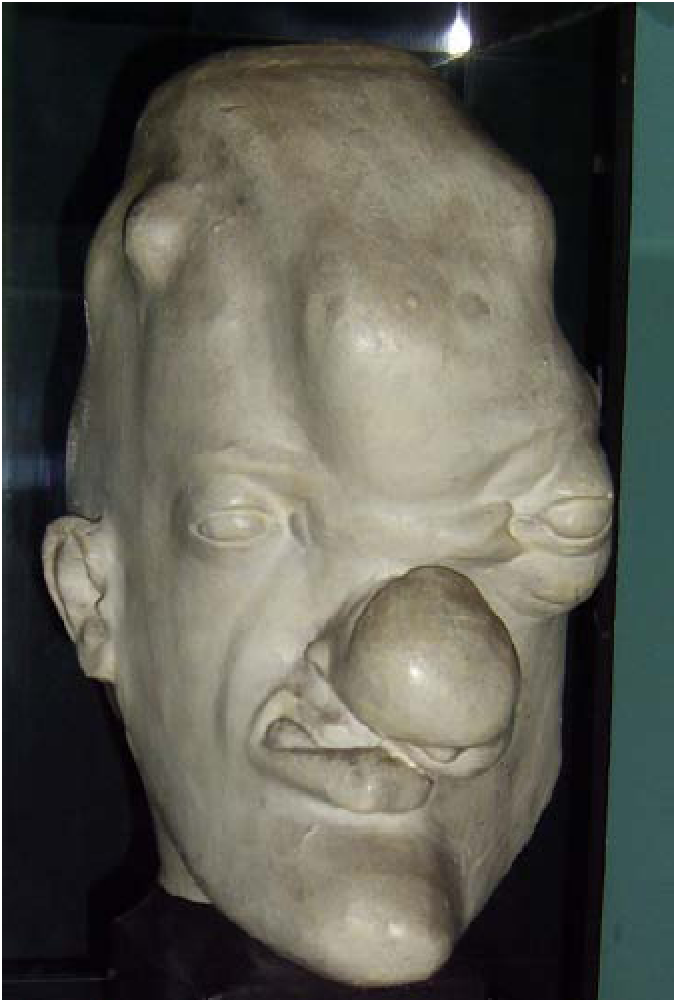A bust in the Musee l'Homme in Paris depicts a disease. What is it?
This bust depicts gumma associated with tertiary syphilis. The gumma are granulomas attempting to wall off the treponema pallidum. Gummas have are a proteinaceous mass with a necrotic center. They eventaully become fibrotic.
Electron micrograph of spirochetes; similar spirochetes cause leptospirosis.
Tertiary syphilis occurs either as gummas, neurosyphilis or cardiovascular syphilis with aortitis being the most serious feature. There are two main tests for tertiary syphilis: nontreponemal and treponemal. The non treponemal are the VDRL and RPR. These vary can be used to assess treatment status since they decrease with treatment. They are also prone to false positive results and can be positive in measles, lymphoma, tuberculosis and even pregnancy. For this reason the treponemal tests are also done. The FTA-Abs(fluorescent treponemal antibody absorption test) is the most sensitive test for detection of syphilis but is always positive after infection and cannot be used to follow the course of treatment.
There are several non-venereal types of treponema pallidum including yaws shown above.
The good news is that treponema pallidum pertenue and nonvenereal endemic syphilis are easily treated with penicillin. If untreated yaws can cause bony destruction and disfigurement.
Kent ME, Romanelli F. Reexaming syphilis: an update on epidemiology, clinical manifestations and management. 2008. Anneals of Pharmacology 42(2):226-36.
Eccleston K, Collins L, Higgins SP, Primary syphilis: the classical triad of skin rash, mucosal ulceration and lymphadenopathy. 2010. Int J of STD &AIDS 21(8) 537-45.
Bhatti MT. Optic neuropathy from viruses and spirochetes. 2007. Int Ophthalmol Clin 47(4) 37-66.


